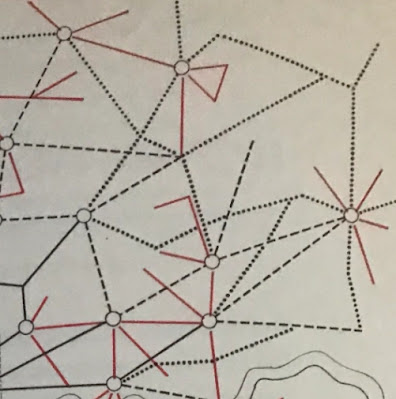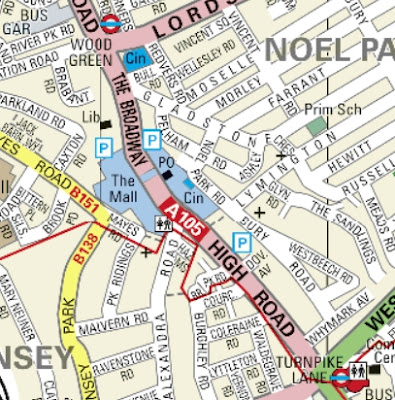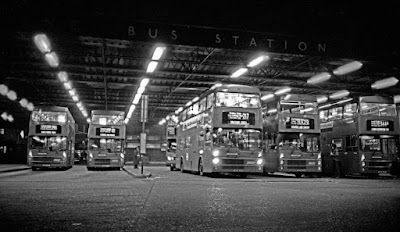Breaking News 0900 Today!
i.e. National Express has been gazumped!Wuill National Express offer more?See tomorrow's blog for futher news - if any.
London Transport's Cunning Plan
Reshaping London's Bus services began in 1968. The idea was to create mini networks round key geographical areas with flat fare bus routes feeding in to the central "hubs" where efficient longer distance routes would spread out wide to serve other hubs.In central London the concept was slightly "tweaked" and Red Arrows appeared, complete with inefficient turnstile entry and a flat fare of 6d (2.5p).
Over the years of enthusiasm, there were lots of them.Some came and come went - but mostly they went! Only two remain.
The passengers were not at all happy. Whilst the 6d flat fare was good news for those paying more before, many short journeys went up from 4d to 6d - sounds nothing today but was regarded as extortionate in 1968.
The first phase of the cunning plan came into effect on 7 September 1968 as follows:
Seven Red Arrow services were introduced additional to the pioneering 500 (which started in 1966) ...
... numbered 501 be 507. They served Waterloo, Victoria, Liverpool Street, Charing Cross and Marylebone stations. The only mainline terminus not served was London Bridge, due to construction works and congestion in the area. A number of existing double deck routes which entered central London were shortened as a result.
A flat fare "satellite" network of six routes (W1–W6) based on Wood Green, and the consequent withdrawal or shortening of conventional routes in the area.
Recasting of services in the Walthamstow area, with the new Walthamstow Central station on the new Victoria line as the hub. Seven new routes were created, and 19 existing ones altered. Of the 45 new buses introduced to the area, 15 were flat fare "standees" and 30 were 50 seater OMO with graduated fares.
But what caused the most grief was the number of "traditional" bus routes that were curtailed, changed or withdrawn completely.
Look at the changes on the corridor that eventually gained our W7 (Proposed originally as W2).And look at the mess at Wood Green itself and the nearby Turnpike Lane bus station.The people of N E London loathed the turnstiles ...... which often failed to turn and were pretty much inaccessible with bags of shopping! Add to that the innate unreliability of the Merlin buses ...... and the whole thing was a bit of an operational disaster darling. And "traditional" through passengers did not like changing bus - they still don't!
Then there was the problem of the hubs. The aim was to provide mini bus interchages at these hubs ...... but nobody seemed to have considered where the land for such luxuries might come from!
The cunning plan only lasted five years although the shadows still remain with lettered routes. Had the plan succeeded there would have been 36 suburban hubs!This would have been HUGE "reshaping" but in the end it didn't happen!
It seemed a good idea at the time!
The Merlins on the W7 ...... were replaced by the DMS class in 1975 ...
The Merlins on the W7 ...... were replaced by the DMS class in 1975 ...
... and thereafter vehicle allocation followed the development of double deckers in London.
fbb remembers travelling to London and visiting Wood Green to see it all happen.
Back then, as now, Wood Green was simply a busy road junction with an Underground station at the corner.
fbb was disappointed.
For a little extra excitement, the lad should have gone, not to Specsavers, but to Turnpike Lane where things were more concentrated in a splendid bus station.fbb has never been back; but it must have been a superb experience, especially after dark with all the lights on ...... even if the Ws had largely disappeared when the above shot was taken in the early 80s.
But the bus station was a rare luxury in the grand cunning plan!
Sigh!
Next First Fares blog : Thursday 10th March


























No comments:
Post a Comment